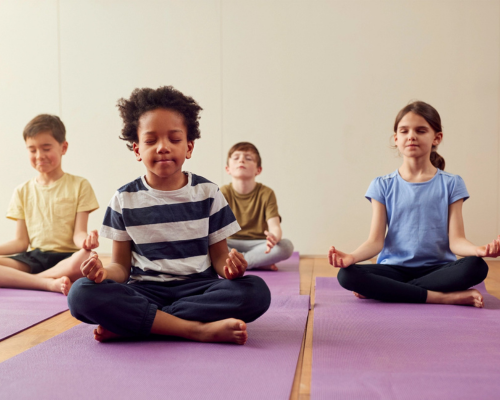Tips for getting your family back-to-school ready.
Heading back to school after the summer break is a big moment for any child. Returning to school requires a shift of gear from the relaxed months of summer. Each new school year brings its own new challenges.
For some children, a new school year might mean exams looming. For others, it might mean a change in friendships. Some might even be moving on to a new school, with all the anxieties that can bring.
As parents, we want to support our children as they make these big transitions. Mindfulness can be a great tool during transitions. Let’s explore how mindfulness can ease the transition back to school, calm those nerves and help your child to feel more in control.
Learn to Be in the Present Moment
You might find that school worries begin for your child early on in the summer activities, long before school has even begun. A practice that can help them during this time and throughout the school year, is working on being in the present moment.
Young children are often naturally great at this. They exist in what has been described by researchers as “point mode” where thoughts about the past and the future are less important than what is happening at the moment. Over time, however, this natural tendency can diminish and children, like many of us adults, spend more time dwelling on the past or the future rather than simply being where they are.
A simple way to step back from thoughts and into the present moment is to help your child to note and label their thoughts. We can model this for kids by narrating the process out loud for them by saying something like: “That sounds like a school worry, but today we are having fun at the beach.” Over time they will be able to do this for themselves and step back from worrying thoughts and return to the present moment.
Make Time to Share Worries
Of course, this does not mean that we should not take time to explore our children’s worries with them. It is vitally important that they have a safe space to share their feelings and concerns.
If your child finds it tough to share their thoughts, then you might think about drawing your feelings together. You could also invest in a mindfulness journal with prompts that help your child to understand more about their feelings and emotions.
As a parent, you will know that children often share their feelings at unusual times and rarely when you have set aside time to talk with them. Our presence with our children and making quality time for them is the first step in creating this safe space where they can share their feelings. Our own practice of mindfulness can help us to be more mentally present as parents, which in turn will help our children to open up to us.
Teach Some Strategies for Anxious Moments
Back to school is a great time to teach your child some strategies for dealing with moments of worry. When children share a worry with you, it can be helpful to try out some of these simple activities that they can then use later. You might also consider trying some of these each morning before they go to school to calm any nerves as they leave the house.
The more you practice with your child, the easier it will be for them to apply these ideas when they need them. You’ll also be giving them tools they can use throughout their life whenever they find themselves in stressful situations.
Count your breathing. One of the simplest but most effective techniques you can teach your child is to count their breathing. Children often struggle to slow down their breathing even when asked to take deep breaths. Slowing down the breathing is key to helping the parasympathetic nervous system kick in and to calm that fight-or-flight response that makes anxious feelings worse.
Encourage your child to breathe in for a count of six and breathe out for a count of 10. If your child struggles with taking a breath this long, then start off with a lower number, making sure to encourage them to breathe out for a longer count than they breathe in.
Breath is an anchor. You can also encourage your child to connect with their breath whenever they need it by sharing the image of the breath as an anchor. Whenever things feel out of control the breath is always there to return to, a place of calm within us all. Focusing on the feeling of the breath in the body can bring relief from stressful moments.
Describe this to your child as a place of safety and calm for them that is within themselves. This can be a great tool for a child to return to whenever they need to.
Visualization. Visualization can also be a powerful tool for children as they head back to school.
For example, you might share the image of a stormy house. Worries are like a storm, they make a lot of noise and can be frightening if you are right in the middle of them but in every storm in the mind, there is a safe house to go to. Encourage your child to visualize themselves inside this safe house simply watching the storm of their worries go on outside the windows.
The worries will still be there, but it is much different to watch a storm from inside a safe and cozy house than from standing outside in the middle of it. This image can help children to understand that they do not need to chase worries away, they will naturally pass and there is always a place of safety and calm with them.
Going Back to School Is a Big Moment for Any Child
It can also be a time when we can support our children to build resilience for facing new challenges that will support them for the rest of their lives. I hope that these strategies support you as you help your child to transition back to school.
Anthony Cupo is a trained mindfulness facilitator (TMF) from the UCLA Semel Institute for Neuroscience and Human Behavior. He is a co-owner of Stepping Forward Counseling Center, LLC, and has been meditating for over 30 years.











Leave a Reply